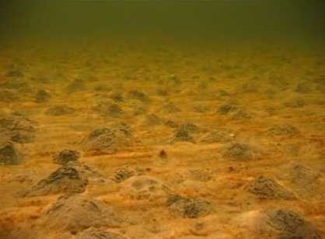Researchers from ETH Zurich and UGA show that the activity of burrowing worms, clams, and shrimp are the most important driver of the community structure of microorganisms in the Earth's biggest carbon sink: continental shelf sediments. The results were published this week in the Proceedings of the National Academy of Sciences:
Sediments underlying the world’s oceans and shelf seas cover >70% of the Earth’s surface area. These sediments are the biggest reservoir of organic carbon in the biosphere, hosting over one thousand times more organic carbon than the atmosphere, soils, and seawater combined. Most of this organic carbon was originally produced by organisms, such as phyto- and zooplankton, plants, and animals, that inhabit overlying water and nearby land and whose remains after death were deposited to sediments by sinking through the water column.
The burial of vast quantities of organic carbon in marine sediments is a driving force behind Earth’s climate and free oxygen concentrations. Yet, the factors that control whether this carbon remains buried over geologic time scales or returns to the hydro- and atmosphere on shorter time scales are not well understood. Microorganisms play an important role by breaking down organic carbon to the greenhouse gases carbon dioxide and methane. Today, only ~7% of incoming sedimentary organic carbon evades microbial degradation and becomes part of the long-term carbon sink. Carbon cycling by microorganisms is in part controlled by animals. These animals alter surface sediments by burrowing and by introducing seawater via a process called bioturbation.
In spite of their importance in the carbon cycle, there are many unanswered questions regarding the ecology of marine sedimentary microorganisms. One of the most basic ones is: what controls the distribution of microbial species? The answer to this question would provide important insights into the sedimentary carbon cycle, since different sediment microorganisms vary in their carbon-cycling metabolisms and their ability to use or tolerate exposure to oxygen.
The full PNAS study, co-authored by professor of marine sciences Christof Meile, provides the first holistic framework to explain the distribution of microbial species in marine surface sediments, and suggests that the two dominant groups of sediment microorganisms, Bacteria and Archaea, are not only evolutionarily distinct, but also occupy distinct ecological niches. Advancing knowledge about carbon-cycling is crucial to understanding the long-term impacts of activity and life in these vast shelf habitats.
Image: subtidal sediment with intense burrowing activity by worms, courtesy of the research team.

